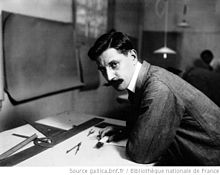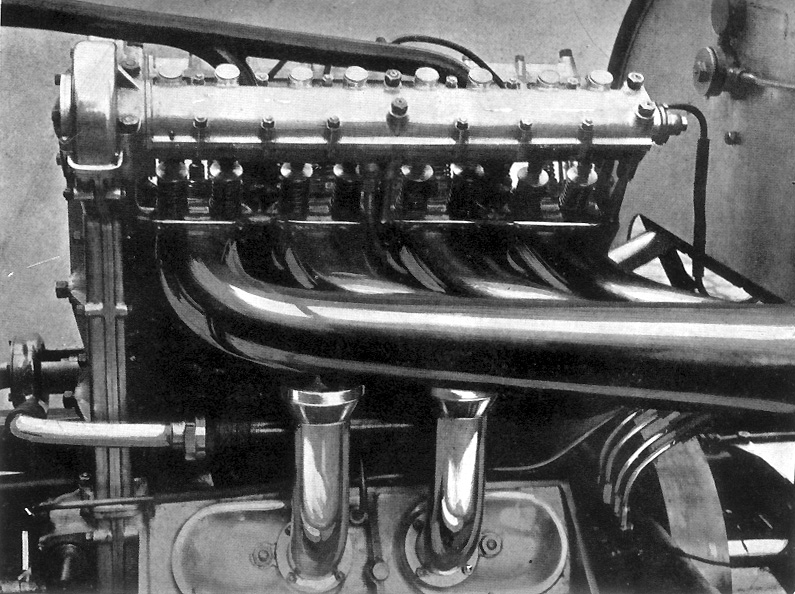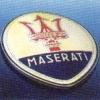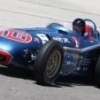There were many different chassis and engine builders in IndyCar in the 40s, but in the 50s almost everybody drove with Offenhauser engines. How came this? What's the story behind that? The same as the F1 Cosworth story in the 70s?
Indy: Offenhauser domination in the 50s
#1

Posted 19 March 2015 - 21:38
Advertisement
#2

Posted 19 March 2015 - 21:50
#3

Posted 19 March 2015 - 22:06
Okay but in the 40s we had many different engine builders, in the 60s again, but why not in the 50s?
#4

Posted 19 March 2015 - 22:16
#5

Posted 19 March 2015 - 22:25
#6

Posted 19 March 2015 - 22:36
Okay but in the 40s we had many different engine builders, in the 60s again, but why not in the 50s?
In the forties, some marginal engines like the Fageol or even the odd Ford V8 made the race because the entry was usually short, and the total number of Offenhauser engines was not yet big enough to fill the field. The rest were exotics such as Winfield, Sparks, Lencki or Brisko - mostly one- or two-off specials, some built at ridiculously high costs. Even more exotic (and no less expensive!) were the imported European cars and engines - Offies were not cheap, but you could probably built a car around it and still have change for a spare compared to what it took to design and build the engine alone for the Novi! It's probably a moot point to speculate about production runs for these engines if they had proved to be more successful than the Offy, since the old fours got the job done, and were best choice for the smaller dirt tracks, too. You can't beat economy and success in one hand!
Things changed in the sixties when FoMoCo decided to have a go. Plus, more and more paved tracks replaced the old dirt miles, and the torque of a four was no longer the recipe for success. A new game, for all intents and purposes.
#7

Posted 19 March 2015 - 22:39
According to Gordon White's book " Offenhauser". ( a good read- with lots of pictures) there were some attempts centered around stock block based engines. Opposition from car owners seemed to doom the attempts.
An old myth refuses to die! Why would car owners (of all people!) oppose the idea of cheaper engines? In reality, the stop watch doomed the attempts.
Edited by Michael Ferner, 19 March 2015 - 22:40.
#8

Posted 20 March 2015 - 02:50
There is 'big' Offys and small. What cubic inch were the Indy Offys.
Having been around dirt speedway all my life the midget engines were from memory just under 120 cube and in the 70s they grew to 130. To try and combat the VWs.
Here in Oz the gun engine was an Offy, if you could not afford one you normally ran a grey Holden. And they won a LOT of races! And if desperate you could rob yout towcar for spares! By the late 60s other engines started to be used. Chevy 2, Sesco, the odd Peugoet, Volvo etc. Plus supercharged Renaults and the like too.
And the came the VW. And a bit later the vastly improved Scat and Autocraft versions. Plus for a while rotarys, even Sigmas and the like. And the Offy really was no more after about 1980. A few soldiered on but like the Holdens were yesterdays idea.
The basic idea for the Sesco is still around, and a Ford version too. And yes I cannot keep up anymore, my interest is only just there these days.
In the US the Sprintcars I believe used big Offys. Though I would have thought they were obsolete by the early 60s with Chev, Ford and Mopar small blocks. No substitute for cubic inches. The Offy with turbo had the advantage though on big black speedways. And the rules helped keep it that way too.
#9

Posted 20 March 2015 - 08:30
There is 'big' Offys and small. What cubic inch were the Indy Offys.
Having been around dirt speedway all my life the midget engines were from memory just under 120 cube and in the 70s they grew to 130. To try and combat the VWs.
Here in Oz the gun engine was an Offy, if you could not afford one you normally ran a grey Holden. And they won a LOT of races! And if desperate you could rob yout towcar for spares! By the late 60s other engines started to be used. Chevy 2, Sesco, the odd Peugoet, Volvo etc. Plus supercharged Renaults and the like too.
And the came the VW. And a bit later the vastly improved Scat and Autocraft versions. Plus for a while rotarys, even Sigmas and the like. And the Offy really was no more after about 1980. A few soldiered on but like the Holdens were yesterdays idea.
The basic idea for the Sesco is still around, and a Ford version too. And yes I cannot keep up anymore, my interest is only just there these days.
In the US the Sprintcars I believe used big Offys. Though I would have thought they were obsolete by the early 60s with Chev, Ford and Mopar small blocks. No substitute for cubic inches. The Offy with turbo had the advantage though on big black speedways. And the rules helped keep it that way too.
Indy/Campcar Offies were 270CI from 1938 til 1955, 252 from 1957 on.
Midget and big car versions hared principles ad features but ere entirely different engines.
Os for costs made when running adedicated special engine like the Winfieldv8/NoviV8. Owner Lew Welch spend a fortune on building the engines those early years and getting two cars to put them in. But in later years he definitely saved on costs by not replacing his first cars, (the FWD chassis) in time when it was clear they were obsolete.
On the other hand, both these two FWD chassis had to be rebuilt entirely after severe crashes (1948 Hepburn, 1949 Nalon) so that is probably where the money he could have used for the chassis went to.
Henri
#10

Posted 20 March 2015 - 08:33
An old myth refuses to die! Why would car owners (of all people!) oppose the idea of cheaper engines? In reality, the stop watch doomed the attempts.
wasn't that also because of even if the stock blocks were cheaper brand new, than an Offy, the Offy was more versatile, suitable for both Indy and dirt so that in the long term sticking to the Offy was cheaper than risking the need for two differnent engines for two different types of racing, something we saw happen eventually in the 60s?
Henri
Edited by Henri Greuter, 20 March 2015 - 09:01.
#11

Posted 20 March 2015 - 14:09
Not to be overlooked is the fact that the Offy was a superbly designed and constructed racing engine, one uniquely suited for American ovals. It is generally mentioned in any listing of great racing motors, along with the Cosworth DFV, Jaguar XK, Chevy small block and others. Success on the tracks quickly became its best selling point.
Yes I would say that ubiquitous use of the Offy resembled Cosworth domination of F1, or Chevy big block stranglehold on the Can-Am series, and for the same reasons. Going with a proven engine allows car designers to take power out of the equation and concentrate on the chassis, body, suspension and so on.
The sheer longevity of the Offy assures its place among notable racing motors.
#12

Posted 20 March 2015 - 19:10
According to Gordon White's book " Offenhauser". ( a good read- with lots of pictures) there were some attempts centered around stock block based engines. Opposition from car owners seemed to doom the attempts. Also, the " laydown" configuration worked well with the Offy.
An old myth refuses to die! Why would car owners (of all people!) oppose the idea of cheaper engines? In reality, the stop watch doomed the attempts.
So the times allegedly set by the Chrysler stock-block effort in testing at IMS in the mid-1950s ('53, I think?) were a myth? I recall that as a specific example -- or legend, as the case may be -- of what RonPohl mentioned. Roger Huntington wrote years ago that the Chrysler set a 500-mile time that would've won the previous year's 500 and was promptly legislated out of competitiveness by USAC. And with the effort and engineering that supposedly went into the engine, it may not necessarily have been that much less expensive than an Offy, plus might not have been as widely available (if at all).
But I don't know for sure what kind of times came out of the Chrysler test, so feel free to set things straight.
#13

Posted 20 March 2015 - 21:52
To Henri: big unlimited V8s were running well on dirt in Sprint Cars, even on half-miles, so I guess the thought process was about replacing the Offy once and for all. Didn't happen, Father Time can't be fooled.
#14

Posted 21 March 2015 - 01:32

It ll started in the mind of this brilliant engineer named Ernest Henry. While working for Peugeot he designed an engine that was the first to combine four valves per cylinder and a double overhead cam four cylinder engine. That engine powered the famous Peugeot L76, which dominated the Grand Prix scene of that era. In 1913 Jules Goux driving a L76 won the Indianapolis 500, the first European car to do so. Peugeot continued to campaign in the US, also winning in 1916 and 1919.

Some of those cars remained in the US, and came into the possession of Henry Miller, a giant of his generation. He took many concepts from this engine and designed his own four valve per cylinder, double overhead cam four, itself a winning engine. But Miller went bankrupt in 1933, and sold his business to Offenhauser. He developed that engine further, into what was known as the Offy. There is a wonderful pedigree behind that engine, refinement, reliability, and success. One reason for that reliability was that the head and cylinders were integral, eliminating the need and weakness of cylinder head gaskets.
#15

Posted 21 March 2015 - 15:59
Another point about the Offy is that they were relatively cheap. Engine could be used for multiple seasons (unlike today)
#16

Posted 22 March 2015 - 00:27
#17

Posted 23 March 2015 - 08:06
To Henri: big unlimited V8s were running well on dirt in Sprint Cars, even on half-miles, so I guess the thought process was about replacing the Offy once and for all. Didn't happen, Father Time can't be fooled.
Taks for filling me in Michael.
I fear I must admit that dirt-track, be it champcars, sprintcars or midgets were never my thing and I don't know much about it in comparison with indy.
Dirt track reminded me too much about a legalized, entertainment version of the "Killing fields" that did not bother the USA as the real deal in the far east..
Henri
Edited by Henri Greuter, 23 March 2015 - 08:06.
#18

Posted 23 March 2015 - 16:47
Do any of you think that the Studebaker dohc motor might have had a chance with more money/development/interest, or was it just doomed as a project versus the Offy?
Roger Lund
edit, even with Agajanian doing the chassis and entry?
Edited by bradbury west, 23 March 2015 - 16:48.
#19

Posted 23 March 2015 - 23:18
The times were okay, but the engine not. It was waaaaayyyy oversize... When Mopar played by the rules, the cars were "too slow, DNQ".
Over the weekend, found the relevant passage in the Huntington book ("Design and Development of the Indy Car"). He wrote (as did others, it appears) that rumors were flying in 1952 that AAA was going to give stock blocks an added 60-65 cubes for the '53 season, to 335; at the time, stock blocks had to run the same size as purebred racing engines, and most Detroit manufacturers had an eight-cylinder that fell in around the rumored measurements. So, Chrysler built one to the 330-some inches, tested it, allegedly saw strong times without pushing the car, and AAA got cold feet (also allegedly under pressure from car owners who were heavily invested in their Offy equipment) and left the size limits alone. With $$$ and publicity already invested, Chrysler tried to make a go of it in '53 with two teams but couldn't make speed; Huntington wrote it wasn't so much horsepower but awful torque coming off the corners.
So yes, the engines were oversized, but for a legitimate reason.
That said, the question seems to be the kind of test and the times the Chrysler set in late 1952. The story, which Huntington repeated, was that the Chrysler ran a full 500 miles at a time that would've won that year's 500, but "Indianapolis 500 Chronicle" by L. Spencer Riggs/Rick Popely quotes driver George Connor as saying the Chrysler never ran more than 20 laps at a time and engine guru Herb Porter said it was poppycock spread by team owners to AAA who, again, were heavily invested in their Offies.
Edited by racinggeek, 23 March 2015 - 23:20.
Advertisement
#20

Posted 24 March 2015 - 15:30
So yes, the engines were oversized, but for a legitimate reason.
A puzzling statement.
Those "rumours", it seems, were invented by Mopar fans in the sixties. Rules did not change AT ALL between 1951 and 1953, and the only change thereafter until the AAA went out of business was a minor one involving different limits for Diesel two- and four-stroke engines. No proposals for rule changes were discussed publicly, and Chrysler engineers and managers freely admitted that the engines were not conforming to the Speedway rules after the "record runs", and that Chrysler were hoping to find enough power in a regular engine for their planned entry in '53. They didn't, the long and the short of it.
As for the speeds established during the tests, it seems you're confusing things here. Without going back to source material, I seem to recall AAA sanction for the tests, so I seriously doubt the figures were "poppycock". It's true that the legal engine didn't perform "satisfactorily", so I guess the Connor quote refers to that engine alone.
The fact that a myth is repeated twenty times in print doesn't mean it's suddenly true.
#21

Posted 24 March 2015 - 16:32
Do any of you think that the Studebaker dohc motor might have had a chance with more money/development/interest, or was it just doomed as a project versus the Offy?
Roger Lund
edit, even with Agajanian doing the chassis and entry?
Difficult question, because there's very limited hard data around for that engine. The fact that it was developed by someone like Willie Utzman is a good argument for it, while the fact that it was dropped like a hot potatoe after a minor incident speaks volumes against it. Going by the available photos, it certainly was a looker!
#22

Posted 24 March 2015 - 19:34
A puzzling statement.
Those "rumours", it seems, were invented by Mopar fans in the sixties. Rules did not change AT ALL between 1951 and 1953, and the only change thereafter until the AAA went out of business was a minor one involving different limits for Diesel two- and four-stroke engines. No proposals for rule changes were discussed publicly, and Chrysler engineers and managers freely admitted that the engines were not conforming to the Speedway rules after the "record runs", and that Chrysler were hoping to find enough power in a regular engine for their planned entry in '53. They didn't, the long and the short of it.
As for the speeds established during the tests, it seems you're confusing things here. Without going back to source material, I seem to recall AAA sanction for the tests, so I seriously doubt the figures were "poppycock". It's true that the legal engine didn't perform "satisfactorily", so I guess the Connor quote refers to that engine alone.
The fact that a myth is repeated twenty times in print doesn't mean it's suddenly true.
OK, thanks. I knew the rules hadn't changed in that time, but had read in several places of those "rumors" running rampant. The way Huntington wrote it was that it was no secret the Chrysler test in late '52 was with 330-ish-inch plants based on the rumor/hope that the stockers were about to get a size increase from AAA. Don't know personally if such rumors were running or who might have spread them.
Since someone else brought up the Studie, did that have factory backing or was it pretty much just Utzman's doing?
#23

Posted 03 April 2015 - 16:11
The owner says the car is fast but VERY hot in the cockpit when driving. I will attempt to post a picture of the car from the Miller meet at Milwaukee.
ZOOOM
#24

Posted 03 April 2015 - 18:01


















